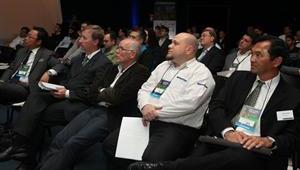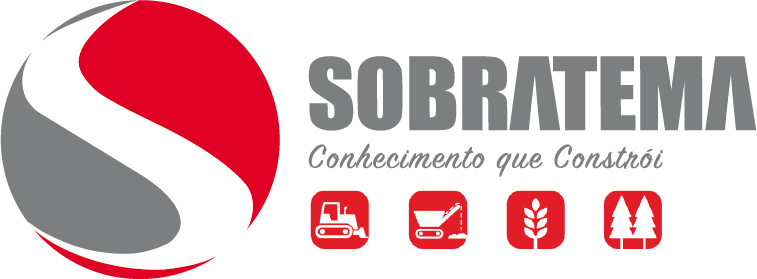Publicado em 24 de junho de 2014
Sobratema seminar presents new concepts and technologies related to hybrid machines
The seminar also had speeches about the post-sale and equipment management

To expose and reinforce the environmental impact reduction concept and the reduction of diesel consumption resulting from the use of hybrid pieces of equipment in the construction industry are themes that are present in the companies’ scenario. According to Carlos Joaquim Stocco Portes, products engineering and new products development manager for Caterpillar Brasil, the main features of hybrid machines are the presence of innovating technologies in the energy use, not present in traditional projects; they transform, collect, store and reuse energy whenever appropriate; and do not need to be just electric or hydraulic, thus combining both technologies.
One of the pieces of equipment shown by Komatsu, which use the hybrid system, the HB205-1 hydraulic excavator, explains Vladimir Machado, application engineer, recovers the braking energy, converting the movement energy into electric energy to charge the capacitors; and, during the turning operation, the stored energy returns to the system as movement/torque energy and also as a support to the diesel engine acceleration. “Komastu hybrid machines operate with the regeneration concept”, he said.
Liebherr introduced the Pactronic System – a Hybrid system (Hydrostatic + hydraulic accumulators) in which the winches energy is stored in two hydraulic accumulators and the winches operation is done by means of the hydrostatic system with the help of hydraulic accumulators. Furthermore, the Liebherr advanced technology integrated system, explained Sergio Kioshi Sassaki, senior sales engineer, has an electronic control system and software which result in low fuel consumption, movement control, which guarantee a smooth precision and accuracy with extreme forces, besides a high level of safety.
According to Massami Murakami, applications engineering director for Volvo in Latin America, the company has a hybrid technology, mainly in busses, which contribute for a 35% fuel and CO2 reduction. “For the future, we are thinking about developing this technology for construction equipment, aiming at the emissions rules evolution; the fossil fuels costs evolution and guaranteeing a better technology for power and control systems”, he said.
Software for equipment management
To talk about Equipment Management and Rental, Marcelo Souccar, director of Services Segments and of the Legal Department of TOTVS, introduces some tools for the assets management, such as the presence of an online portal, graphic plant, re-incidence control, customer service management, distribution suite, storage predictability, among others. “With the utilization of software, it is possible to improve the processes organization, to standardize the reports and managerial information, to guarantee a better project purchases control, the productivity control, among others”, he said.
Yoshio Kawakami, consultant of Raiz Consultoria and technical director of Sobratema, introduced the Integrated Vehicle Health Management (IVHM) concept, which was first presented in the 1970s in the North-America aerospace industry.
According to the consultant, the concept needs to migrate to the equipment industry. In this new stage, besides integrating components of different lines, the equipment is improved at every passing day, by means of simulations, tests and optimization methods, in real time, which permit to isolate the failures and prevent the system jeopardizing. “The IVHM enlarges the product life cycle with health, performs more accurate and realistic diagnosis and prognosis, anticipates the failure and intervention based on the actual degradation versus empiric estimations; and reduces the intervention/maintenance time”, he said.

Av. Francisco Matarazzo, 404 Cj. 701/703 Água Branca - CEP 05001-000 São Paulo/SP
Telefone (11) 3662-4159
© Sobratema. A reprodução do conteúdo total ou parcial é autorizada, desde que citada a fonte. Política de privacidade


